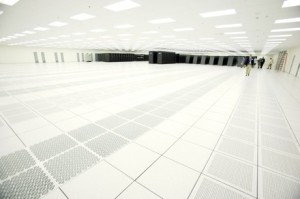 Japan intends to deliver an exascale supercomputer in six years. The firm completion date makes Japan novel among the nations in the race to build exascale systems.
Japan intends to deliver an exascale supercomputer in six years. The firm completion date makes Japan novel among the nations in the race to build exascale systems.
The Riken Advanced Institute for Computational Science in Kobe, already home to Japan’s largest computer system, said last week it will lead Japan’s exascale program, with “successful development of the exascale supercomputer scheduled for completion by 2020.”
“We will devote our energy to this project,” said Kimihiko Hirao, director of the Riken institute, in a statement. An exascale system “will be a great boon for science and technology, as well as industry,” he said.
The U.S., meanwhile, is aiming for an “early 2020s” delivery of an exascale system , a Department of Energy official said during a presentation that coincided with the annual supercomputing conference, SC13, in November.
In December, Congress approved a fiscal 2014 defence budget bill that requires development of an exascale system within a 10-year period, or by 2024. This is an improvement over an earlier Senate defense funding bill that included a “20 year plan.”
The Europeans are developing an ARM-based exascale system and have set a delivery goal of 2020. That goal, though, doesn’t have the stake-in-the-ground clarity of Japan. China, which presently operates the world’s fastest supercomputer, is believed to be targeting the 2018-2020 timeframe for exascale delivery, but has not yet made an official announcement.
An exascale system is capable of a quintillion, or a million trillion, floating point operations per second. It is approximately 1,000 faster than a single petaflop system. The fastest systems in use today are well under 50 petaflops.
Exascale development may be a race but no one has yet defined what will constitute a winner. Today, the fastest supercomputers are determined by their ranking on the Top 500 list. But if a nation deploys an exascale system that uses 100 MWs of power, and another nation deploys one two years later with technology that uses a third as much power, which nation is better off?
It now costs about $1 million a year to run a 1 megawatt system, and current supercomputers are already in the range of 10 megawatts. There are numerous technical challenges to reduce those power requirements.
For instance, memory is a major challenge for exascale developers. DRAM memory is too slow and expensive to support exascale, but scientists aren’t sure yet what will replace it.
Along with the race to deliver exascale, another technology competition is taking shape: quantum computing.
The U.K. last month said it is investing $444 million in quantum computing over the next five years. The money will fund a network of quantum computing centres.
“Science is a personal priority of mine,” said U.K. Chancellor George Osborne, in a speech last month outlining the quantum computing effort.
Quantum computing uses subatomic particles and has the potential to leapfrog all other forms of computing. Today, computation is based on bits that can be either 0 or 1, with calculations done one after the other. But quantum can hold those states, 0 and 1, simultaneously increasing processing power exponentially.
In the U.S., quantum computing work is underway at federal research facilities.
NASA’s Ames Research Centre has two 512-qubit D-Wave Two quantum computers. In November, it announced that it was working with Google and others to create the Quantum Artificial Intelligence Laboratory.





